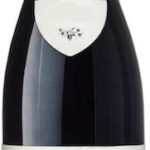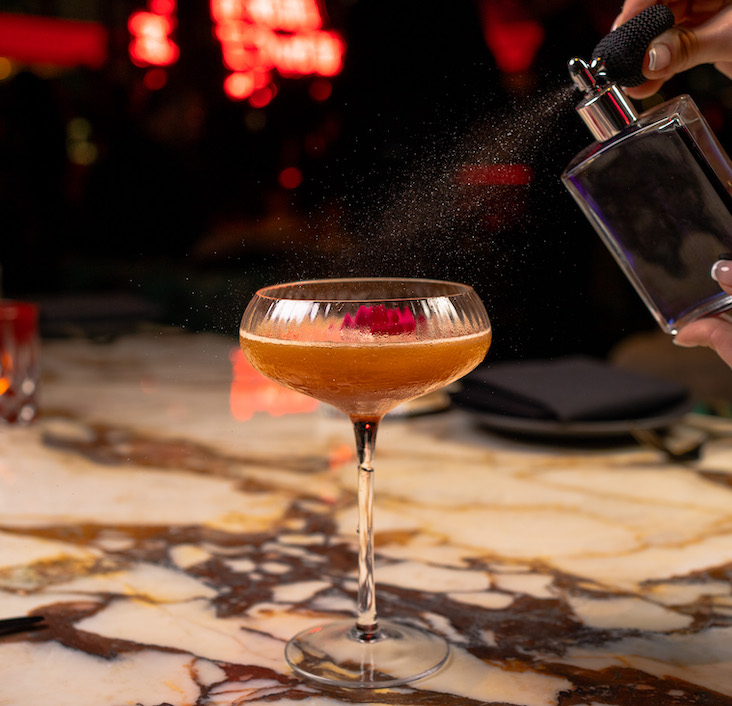Brazilian steakhouse concepts began to crop up in the U.S. about 20 years ago, introducing Americans to the churrasco and rodizio style of dining. The format involves paying a set price for all-you-can-eat grilled meats carved tableside.
While the genre has thrived here and expanded, U.S. consumers are changing their dining-out habits, with many opting for lighter, faster and more casual meals. That’s why Fogo de Chão churrascaria has embarked on a number of initiatives to give consumers more reasons to visit.
“In the last few years, we have expanded to introduce new menu platforms at a variety of price points,” says Fogo de Chão CEO Larry Johnson. These include a new Bar Fogo menu, Weekend Brazilian Brunch and lighter, more flexible options.
What’s more, the chain has elevated the cocktail offering with new specialty drinks, several made with cachaça, Brazil’s rum-like native spirit.
Fogo’s beverage program, which primarily focuses on South America, “brings the highest quality products of various origins to provide the best experience for our guests,” Johnson says.

Grilled meats are prepared and carved from the skewer tableside by Fogo de Chão gaucho chefs.
The Gaucho Way
The first Fogo de Chão churrascaria opened in 1979 in Porto Alegre in southern Brazil. The concept expanded to São Paulo, Rio de Janeiro and other Brazilian cities in the early 1980s; the first U.S. location opened in Addison, TX, in 1997.
Growth has been steady: Boston-based private-equity firm Thomas H. Lee bought Fogo de Chão from Brazil’s GP Investments Ltd. in 2012. The $288 million steakhouse chain, which went public in 2015, now operates 48 locations throughout Brazil and the U.S.
The 35th location in the U.S. opened in Dallas this past February. Fogo plans restaurant openings for Jeddah, Saudi Arabia and Dubai later this year.
The concept has resonated with meat-loving Americans. Churrasco is a centuries-old Southern Brazilian barbeque style that involves grilling simply seasoned meats on large skewers over an open fire, says Johnson. Fogo de Chão (pronounced fo-go dèe shoun) means “fire on the ground” in Portuguese.
The founders of Fogo de Chão grew up on a traditional farm in the Serra Gaucha, a mountainous region of Brazil’s Rio Grande do Sul. “They learned the authentic culinary techniques of churrasco from their fathers and grandfathers—a tradition that continues to be passed on through generations even today,” Johnson notes.
The full churrasco experience involves “espeto corrido,” which is Portuguese for “continuous service.” The grilled meats are prepared and carved from the skewer tableside by Fogo de Chão gaucho chefs.
As part of the all-you-can-eat format, customers have a two-sided cardboard disk with one side red and one side green. The green side signals the waiters to bring more meat over, the red side tells them to hold off.
So a visit to Fogo de Chão requires a substantial appetite and time commitment to do right, and it’s typically priced at about $50 to $60—not exactly a light, quick or inexpensive meal. The brand needed to offer more flexible options and opportunities for guests to enjoy Fogo at a variety of price points.

“We try to have our finger on the pulse of an ever-changing marketplace, specifically in regards to our Millennial guests.” — Fogo de Chão CEO Larry Johnson.
Brunch, Lunch and Bar Bites
Fogo de Chão rolled out its Gaucho Lunch menu in May 2016. Available Monday through Friday and starting at $15, the lunch includes the chain’s Market Table Bar’s seasonal soups and salads, fresh vegetables and feijoada, a black bean stew with rice, orange and yucca flour.
For an additional charge (ranging from $6 to $8), guests opting for the Gaucho Lunch can add a selection of fire-roasted lamb, steak, chicken or pork carved tableside by the gaucho chefs. The lunch includes garlic mashed potatoes, carmelized bananas and fried polenta with parmesan cheese.
At the same time it unveiled the Gaucho Lunch, Fogo de Chão launched a Sunday Brazilian Brunch priced at about $39.95, depending on location. The program was expanded to Saturdays and Sundays in November.
The Brazilian-inspired breakfast items include Pao de Queijo Egg Bake (cheese bread baked with eggs, asparagus, broccoli, sweet peppadew peppers and Swiss cheese); Braised Beef Rib Hash; Seasonal Sunday pork roast; and Bolo de Fuba, a sweet cornmeal cake served with whipped carmelized banana crème.
And this past March the chain rolled Bar Fogo. The concept, first introduced at select locations in 2013, addresses evolving consumer dining-out trends by offering a more casual option for guests to experience the brand’s cuisine and service, Johnson says.
The Bar Fogo Menu includes smaller, shareable plates such as the beer-braised beef rib sliders, garlic shrimp with a passion fruit dipping sauce, mini-tenderloin skewers, Brazilian empanadas and crispy parmesan polenta fries.
Then there’s the Fogo cocktails, which aim to capture and honor the spirit of Brazil with fresh ingredients, native flavors and of course, plenty of cachaça. In fact, “we have our own Fogo-labeled cachaça that is made and bottled by the premier craft cachaça maker in Brazil, Weber Haus,” Johnson says. “We serve both a silver and a two-year aged gold cachaça.”
Hey Caipirinha
The most popular cocktail is Fogo’s signature caipirinha, made with muddled lime, sugar and the house cachaça. New varieties of Caipirinhas feature some of Brazil’s signature fruits.For instance, there’s the Strawberry Hibiscus Caipirinha (silver cachaça with hibiscus syrup, strawberries and lime), the Mango Habanero Caipirinha (silver cachaça, limes, mango, habanero peppers) and the Coconut Creme Caipirinha (silver cachaça, Mount Gay Black Barrel rum, Coco Lopez and lime).
And in keeping with the brown-spirits trend, Fogo offers a Berry Mint Caipirinha, made with silver cachaça, blackberries, mint, Woodford Reserve, and spiced cherry bitters.
Other whiskey drinks include the Brazilian Gentleman, with Knob Creek rye bourbon, passion fruit, tawny port, Amargo Chuncho bitters and honey; The Caramelized Pineapple Old Fashioned (Bulleit rye whiskey, muddled caramelized pineapple and orange and Luxardo maraschino cherries); and the Whisky Jam Sour (Monkey Shoulder Scotch, lemon sour, orange bitters and raspberry jam). The Flor de Fresca cocktail uses Principe de las Aposteles, a gin from Argentina, with muddled red grapefruit, elderflower and honey elixir.
Vodka drinks include the Brazilian Nights, which mixes Belvedere vodka with passion fruit, cinnamon honey, lemon ginger tincture and La Marca prosecco; the Cucumber Mint Smash (Tito’s vodka, lime and muddled cucumber) and the Mango Ginger Martini (Ketel One Citroen, fresh mango, South American ginger, honey lemon elixir and fresh basil).
A Brunch Beverage Bar offered during the weekend brunch includes made-to-order Caipirinhas, Passion Fruit Mimosas and a Brazilian-spiced Bloody Mary made with cachaça.
Fogo’s Happy Hour is available on weekdays from 4:30 to 6:30 p.m. with lower price points on food, cocktails, beer and wine. With menu items starting at just $4 during Happy Hour, Johnson says, “it’s a great opportunity for new guests to be introduced to the brand.”

The first U.S. Fogo de Chão location in Addison, TX.
South American Accents
All Fogo restaurants have a core beer list and must carry Stella Artois, Heineken, Budweiser, Bud Light and Miller Lite. But Johnson notes that management teams are empowered to add a few selections of local beers at each location.
Local choices vary but may include Brazilian beers available only in certain markets, such as Palma Louca and Sul American, as well as local selections like Goose Island, Stone, Allagash and Delirium. Beer prices range from $5 to $10 a bottle and $6 to $10 for drafts.
Fogo also carries dark and gold beer offerings Brazilian brand Xingu. In fact, uses the Xingu to glaze the beef brazed sliders that were recently added to the Bar Fogo menu.
Fogo also boasts a large selection of South American wines, which “is a key differentiator for our brand and businesses,” Johnson notes. “We have a wonderful selection of Argentinian, Chilean, and Brazilian wines at approachable price points that you won’t find at other restaurants.”
These include The Seeker Red Blend from Central Valley in Chile for $40; Santa Julia cabernet from Mendoza, Argentina ($45); Colome Autentico malbec ($58 to $68); Luca “Laborde Double Select” syrah ($68 to $88); Luigi Bosca Gala 2 red blend ($88 to $124); and Familia Zuccardi “Q” malbec ($65 to $75). “Guests love discovering new regions and varietals that they don’t find in typical steakhouses,” says Johnson.
Fogo, which started selling private-label wines in Brazil in 2009, introduced its own private-label Gran Reserva malbec, which is made by the Zuccardi family in Argentina, in 2011. The dark fruit flavors of the proprietary wine make it a good match for Fogo’s savory ribeye steak.
“We try to have our finger on the pulse of an ever-changing marketplace, specifically in regards to our Millennial guests,” Johnson says. “So we’re continuously making efforts to introduce interesting wines that appeal to this highly coveted demographic.”
What’s more, each restaurant in the U.S. has at least one Level 1 Sommelier, who will speak with guests about the different characteristics of the wines, make recommendations and help to ensure a great experience at Fogo de Chão.
A Fresh Look
In addition to modernizing the menu, Fogo de Chão is also giving its restaurants a lighter, more contemporary feel. It recently renovated several locations including Minneapolis, Atlanta and Houston, and plans to redo additional stores
Updates to the Beverly Hills unit include replacing heavy window treatments with sheer curtains to increase natural light, a new outdoor patio and a living greenery wall. Renovations at the Minneapolis location included an expanded Bar Fogo area with an imported white Carrara marble bar and additional seating, a new waiting lounge and custom glass wine cellar.
The bar is a key part of the Fogo de Chão experience. “At Fogo we are building more than just a beverage program, we are building a beverage culture,” Johnson says. To develop and nurture that culture, “we’re not only innovating, but investing in training our teams at every restaurant.”
Melissa Dowling is editor of Cheers magazine. Reach her at modowling@epgmediallc.com







